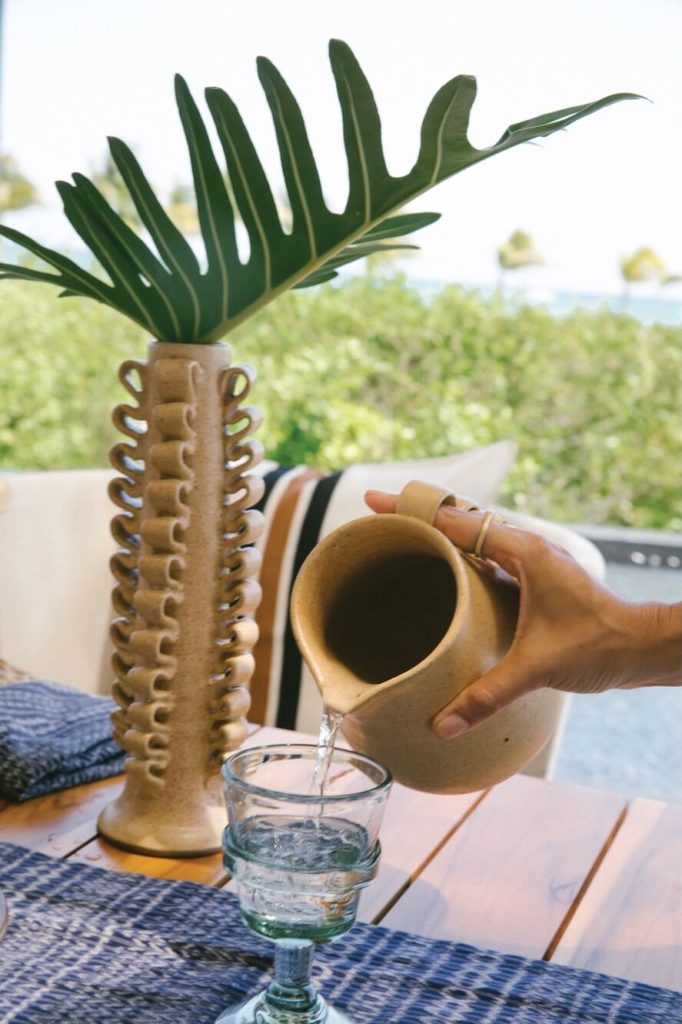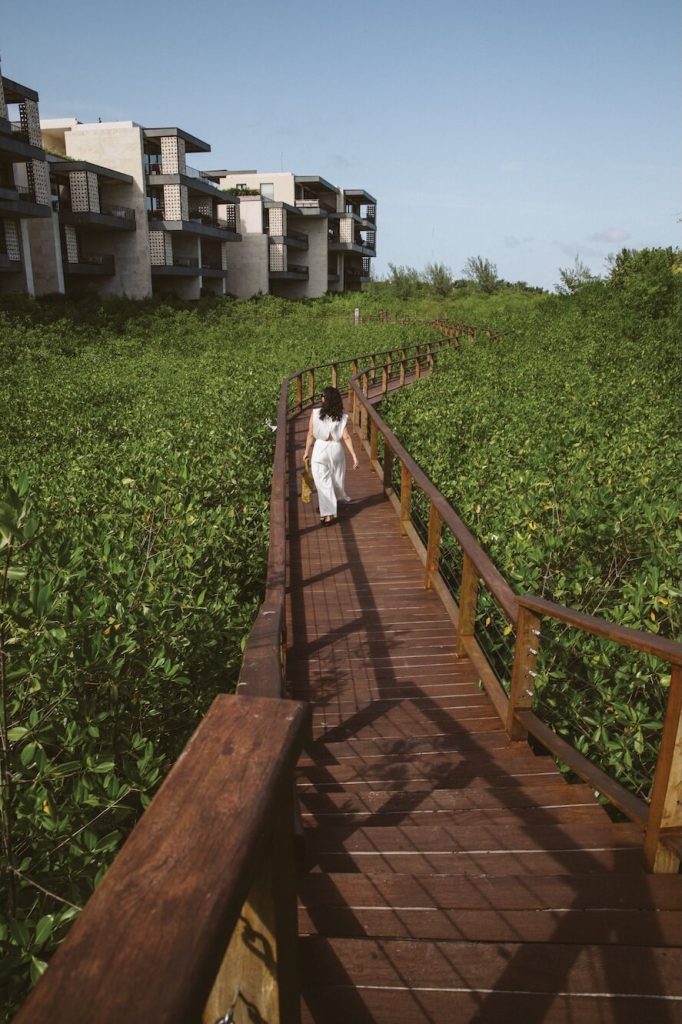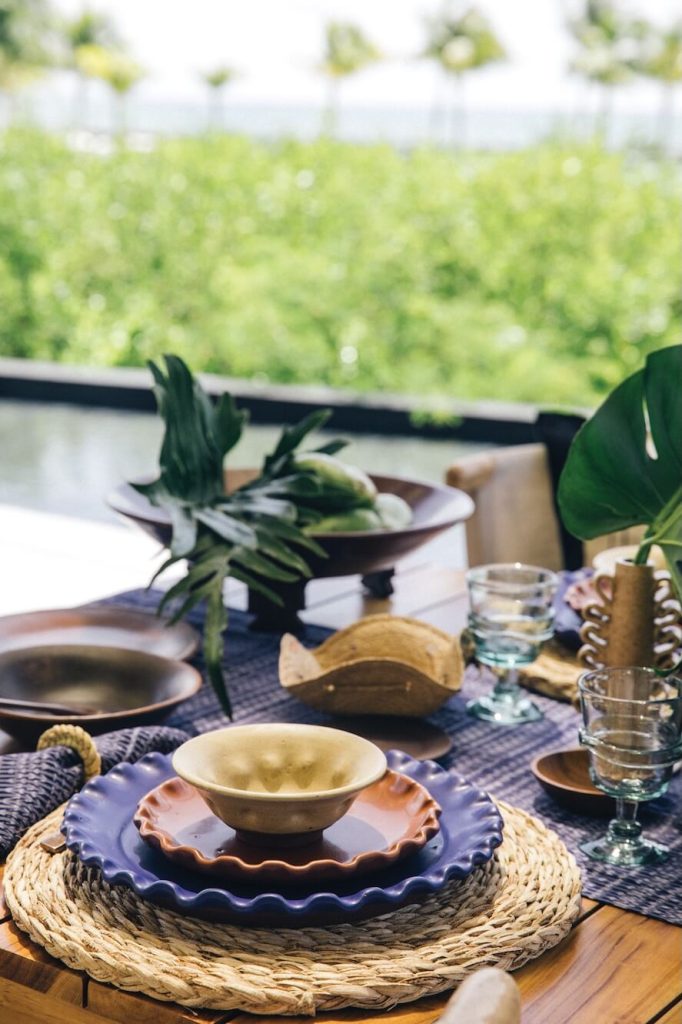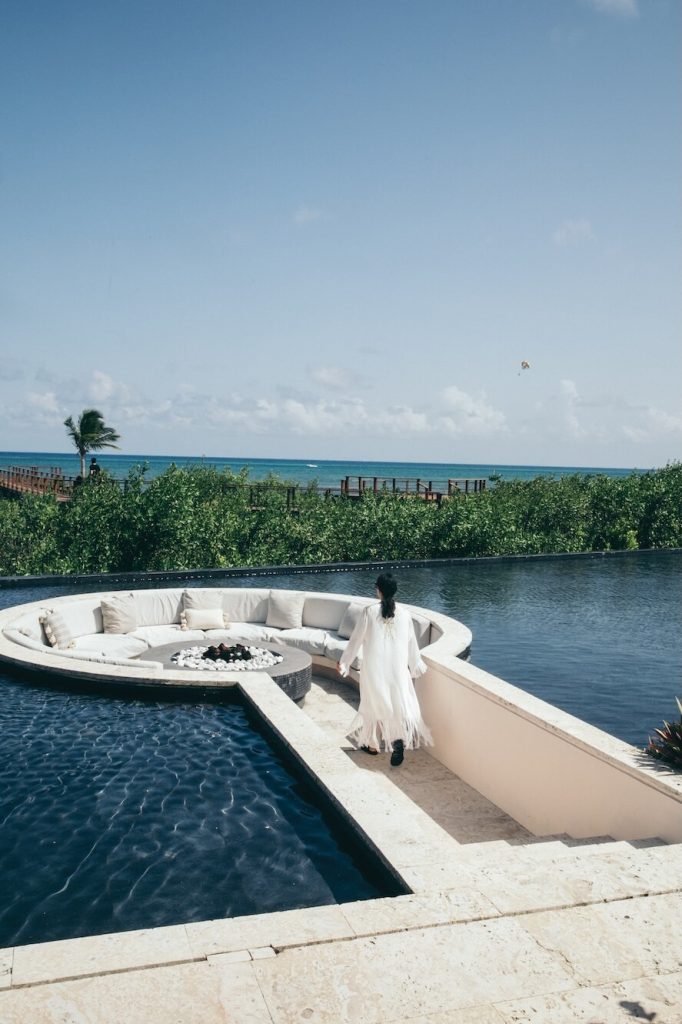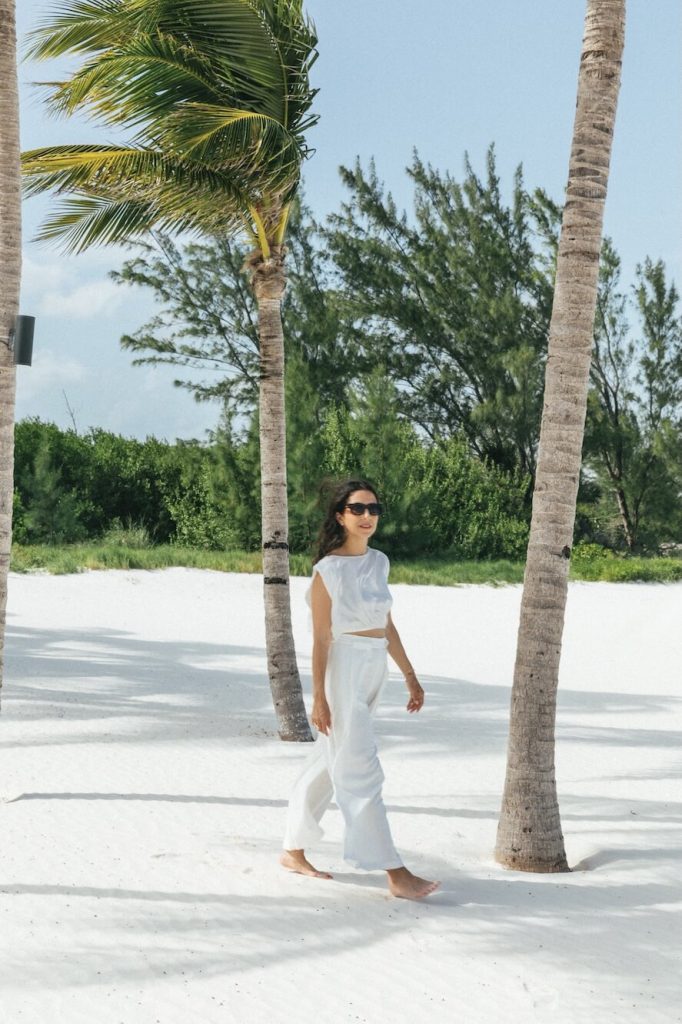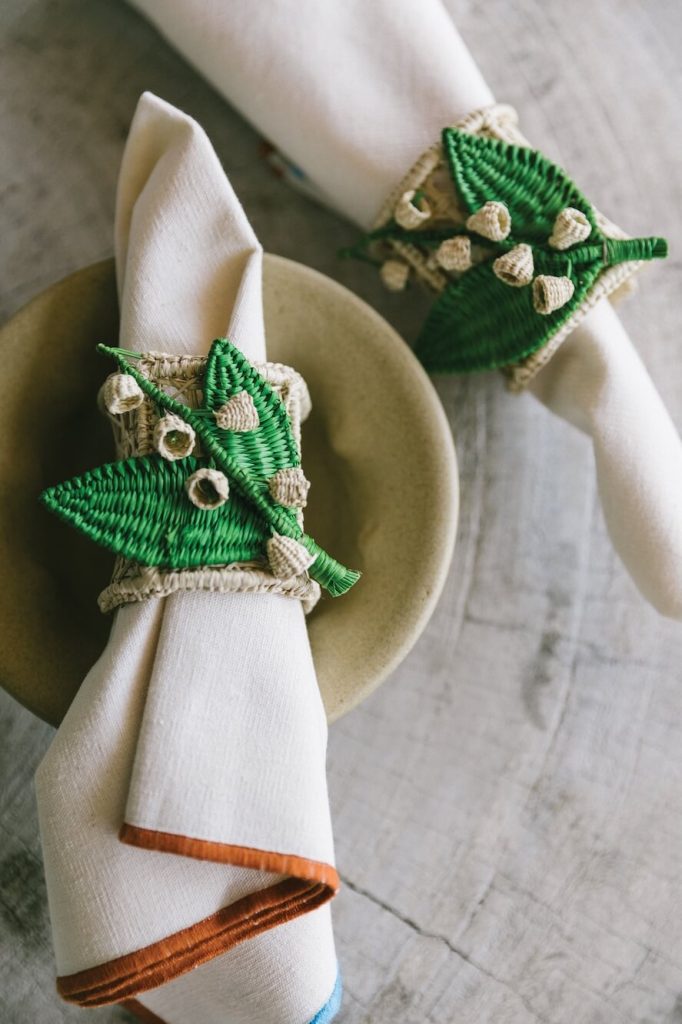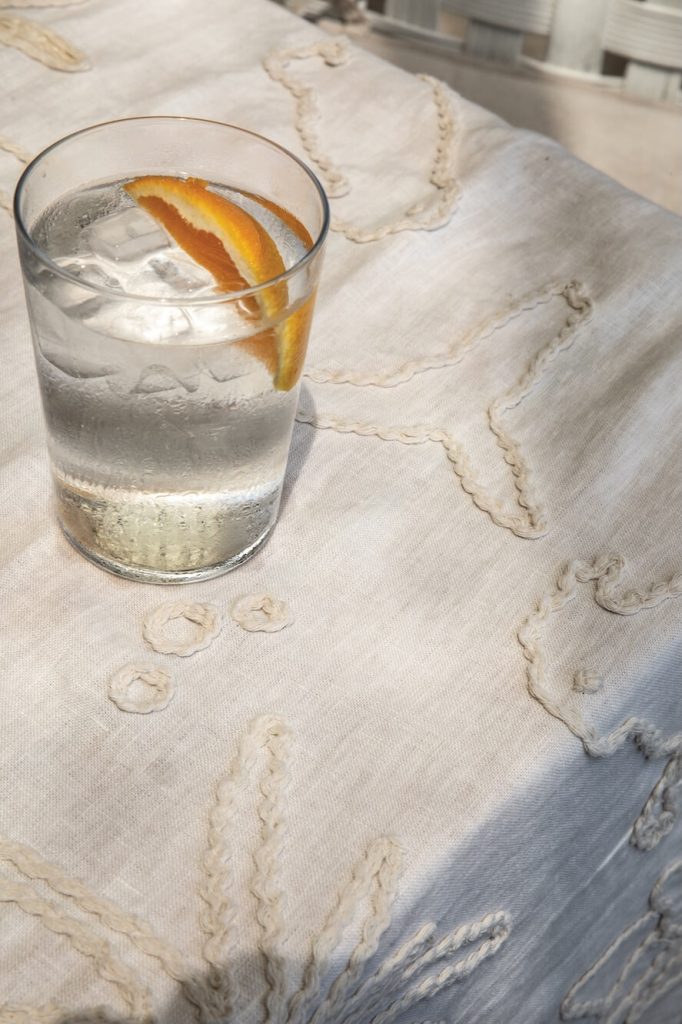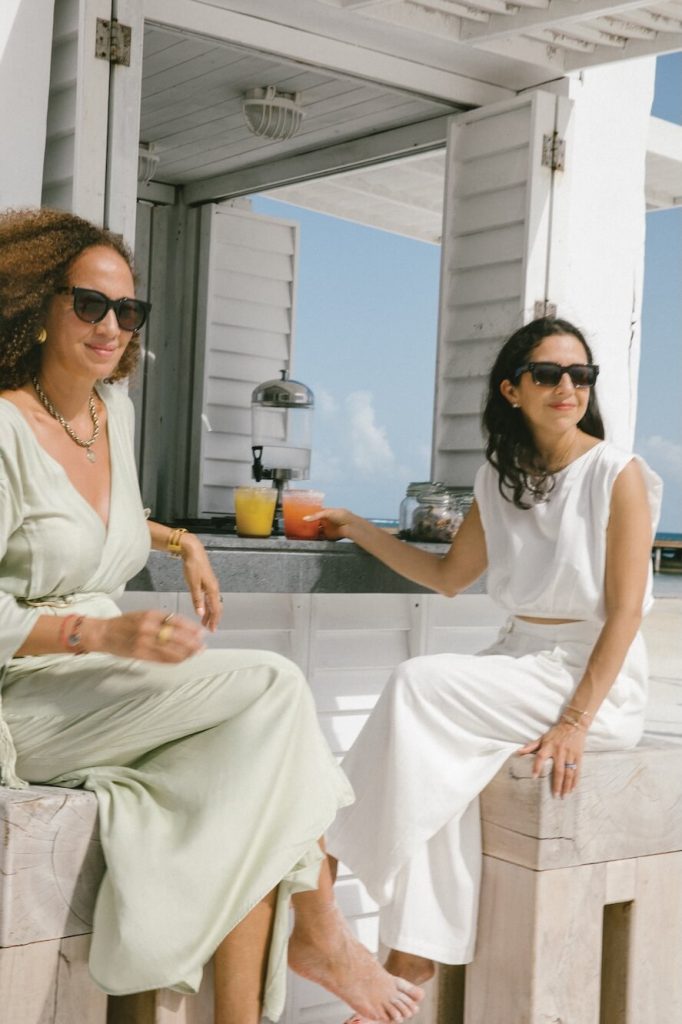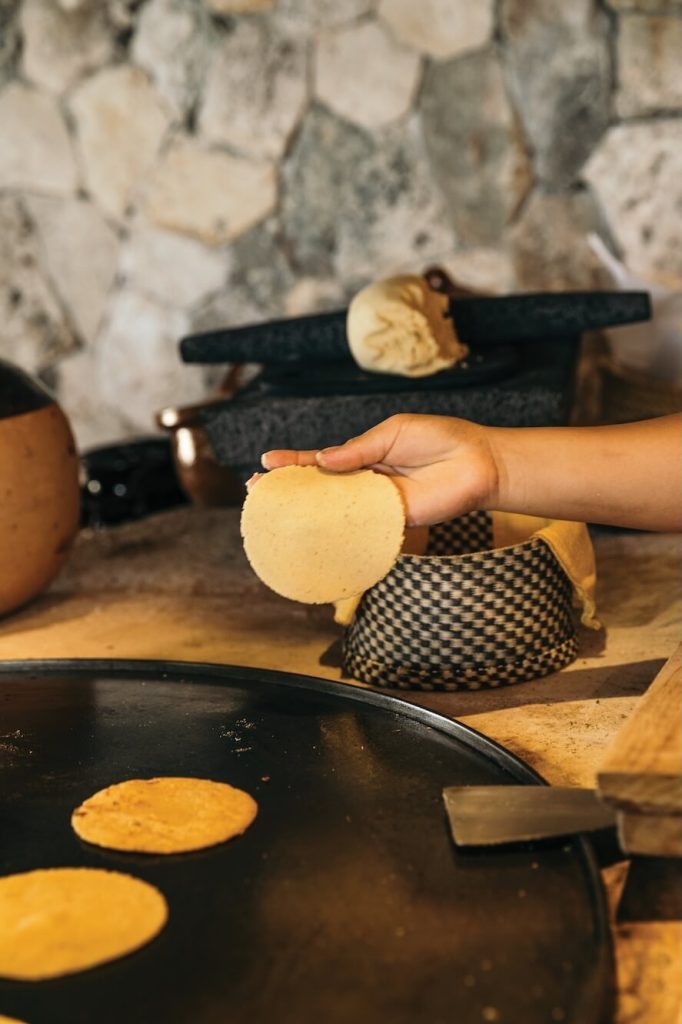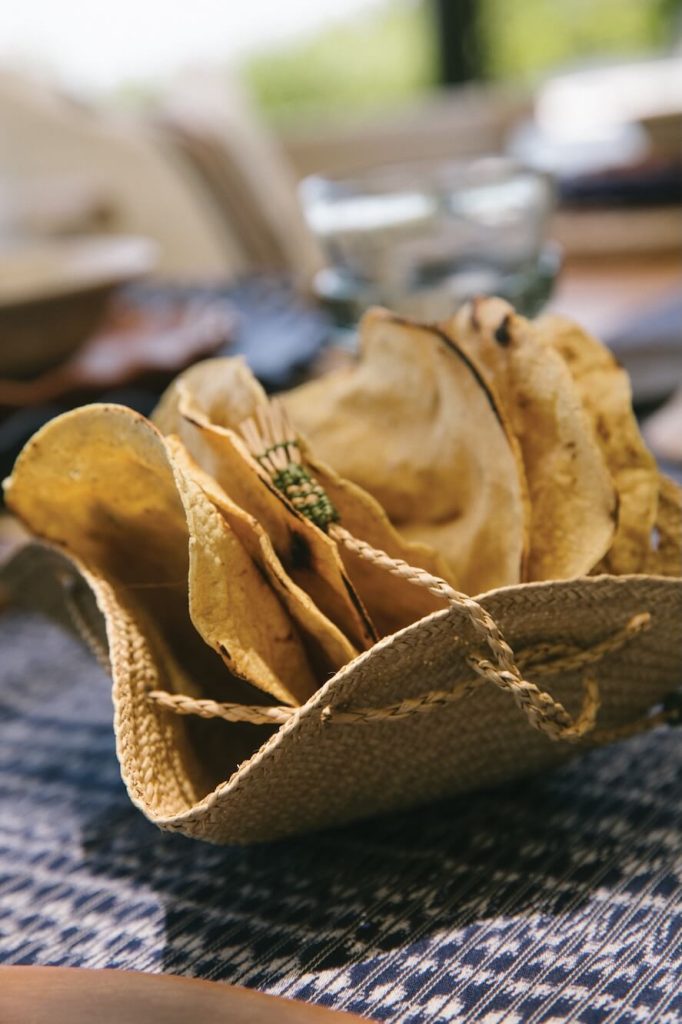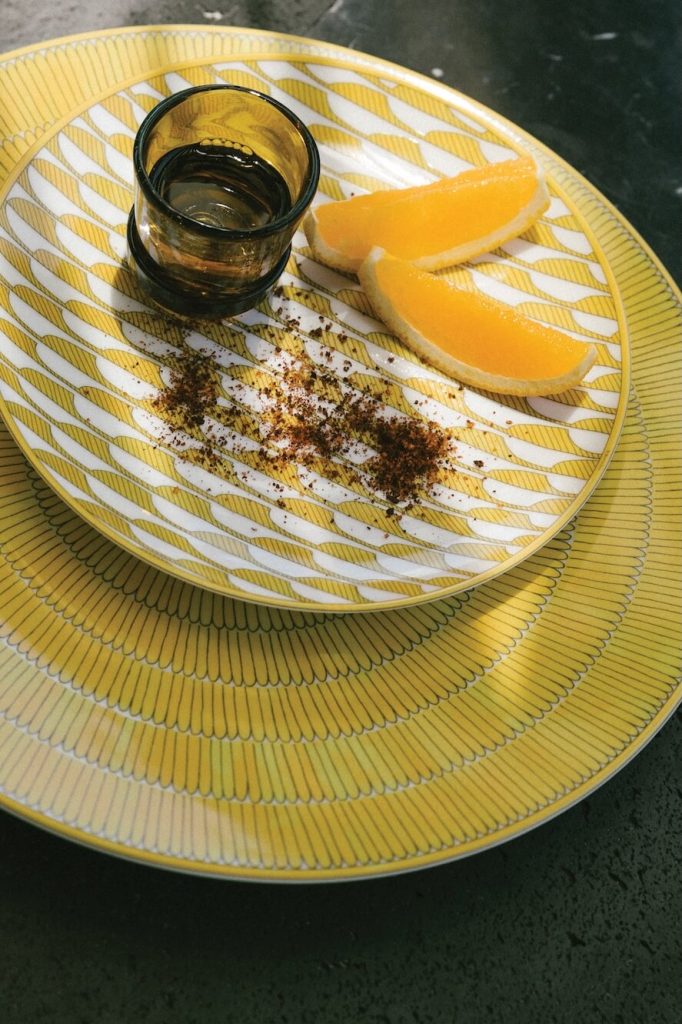The ancient crafts of the Mayan people tell the story of a place where beauty knows no bounds: Ceramics etched with visions of lush mangroves, graceful cranes in flight, glowing fireflies; woven textiles in vivid pinks, cerulean blues, piercing yellows and greens—the colors of the sunset, the hues of sacred plants and animals.

Today, that beauty endures, inspiring a new generation of Mexican artisans who blend the native artistry of their home with fresh imagination. The movement is simultaneously a preservation and an evolution of ancient craft—something Karla Martínez de Salas, editor in chief of Vogue Mexico and Latin America, has observed since she moved to Mexico City from New York City in 2015.
Martínez de Salas wore La Troupe separates in front of a mural by Mexican artist Daniel Barreto at Etéreo’s Che Che restaurant.

It was in that boundless spirit that Martínez de Salas recently hosted a creative lunch at Etéreo, Auberge Resorts Collection, bringing together some of her favorite artisans and influential makers from around Mexico to revel in the magnificent Riviera Maya landscapes and celebrate their shared heritage of craftsmanship.
The vibe at Etéreo’s Itzam restaurant was casual and effortlessly stylish, with guests dressed in flowing embroidered kimonos by Tulum’s La Troupe and loosely tailored shirts by Mexico City’s Chava Studio. On the tiled tables, pottery and vessels in matte blue and moody earthtones were compliments of ceramicist Perla Valtierra. “Perla is a great example of the modern Mexican craft movement,” Martínez de Salas says. “Pottery is very much part of Mexican culture, yet she does it in a way that nobody else is doing, and all made by Mexican artisans.”
Perla Valtierra; Olivia Villanti, founder of Chana Studio; Karla Martínez de Salas; and Ana Thenor of La Troupe.

Known for their wavy edges and rich matte finishes, Perla’s tactile pieces are hand-made in Valtierra’s two workshops in the Bajío region, where traditional ceramics methods have been preserved for centuries. A trained potter herself, Valtierra works alongside generational ceramists to develop her signature pieces. “You can feel the artist’s hand in each piece,” she says.

The artisan’s touch is also at the core of La Troupe’s collection of women’s fashion and accessories. Co-founded by Argentine native Ana Thenor, the lifestyle brand was born of a deep appreciation for Mexico’s maker culture. “We came to visit Tulum 20 years ago and fell in love with Mexican art, culture, and craft,” Thenor says. Along with her two partners, she sources regional crafts from all over Mexico, incorporating traditional craftwork into bohemian-style clothing, such as kimono jackets embroidered with a sun on the back and other Mayan symbols. They collaborate with more than 100 female artisans across Chiapas, Yucatán, and Quintana Roo to use their skills in new ways.
Martínez de Salas and Valtierra at lunch. Itzam’s sustainable menu was developed by executive chef Carlos Segura, using Mexican traditions, locally grown organic produce, and fresh fish.
Mexico’s dedication to fine craftsmanship also inspired Olivia Villanto to establish her Chava Studio, in 2020. The brand’s goal is a lofty one—to make custom shirts suited to women’s unique proportions—aided by the country’s long heritage of master tailoring. “Italy and France have a reputation of generational craftsmanship,” Villanto says, “and we have the same in Mexico, but it has been undervalued.” Using fine fabrics sourced from Europe, each made-to-measure shirt is cut and sewn by local seamstresses.
Martínez de Salas gathered her friends at Che Che, Etéreo’s al fresco Japanese-fusion restaurant, where pre-lunch margaritas were toasted in front of a mural by famed Mexican artist Daniel Barreto. At Itzam, they sat down to local delights like vuelve a la vida verde, lechén, and Wagyu tetela—all served family style. In the restaurant’s comal surrounded by artisanal baskets, guests took turns trying their hands at tortilla-making, working with a tortillera.

As the sun drew closer to the horizon, the women strolled the walkways above Etéreo’s mangroves before shedding their sandals for the white sand beaches on the Caribbean Sea. Soaking in the beauty of their surroundings, like so many artisans of the past, they watched as the shadows of the palm trees stretched ever longer on the shore, the splendor of this remarkable place once more captivating the imagination of a generation.


